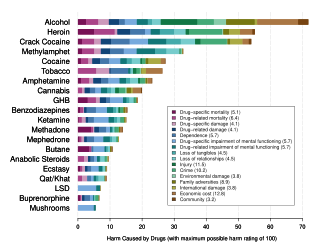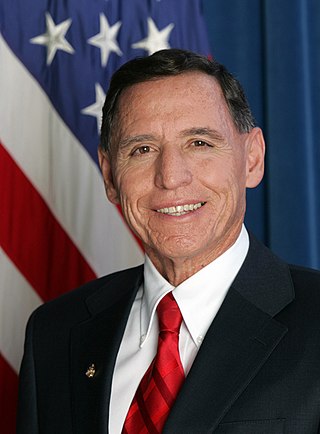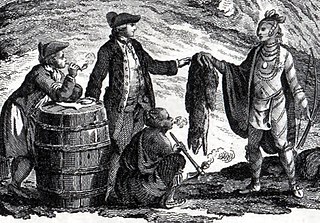
The Substance Abuse and Mental Health Services Administration is a branch of the U.S. Department of Health and Human Services. SAMHSA is charged with improving the quality and availability of treatment and rehabilitative services in order to reduce illness, death, disability, and the cost to society resulting from substance abuse and mental illnesses. The Administrator of SAMHSA reports directly to the Secretary of the U.S. Department of Health and Human Services. SAMHSA's headquarters building is located outside of Rockville, Maryland.

Drug rehabilitation is the process of medical or psychotherapeutic treatment for dependency on psychoactive substances such as alcohol, prescription drugs, and street drugs such as cannabis, cocaine, heroin, and amphetamines. The general intent is to enable the patient to confront substance dependence, if present, and stop substance misuse to avoid the psychological, legal, financial, social, and medical consequences that can be caused.
Aversion therapy is a form of psychological treatment in which the patient is exposed to a stimulus while simultaneously being subjected to some form of discomfort. This conditioning is intended to cause the patient to associate the stimulus with unpleasant sensations with the intention of quelling the targeted behavior.
Substance dependence, also known as drug dependence, is a biopsychological situation whereby an individual's functionality is dependent on the necessitated re-consumption of a psychoactive substance because of an adaptive state that has developed within the individual from psychoactive substance consumption that results in the experience of withdrawal and that necessitates the re-consumption of the drug. A drug addiction, a distinct concept from substance dependence, is defined as compulsive, out-of-control drug use, despite negative consequences. An addictive drug is a drug which is both rewarding and reinforcing. ΔFosB, a gene transcription factor, is now known to be a critical component and common factor in the development of virtually all forms of behavioral and drug addictions, but not dependence.
Marc Galanter is Professor of Psychiatry at New York University School of Medicine and has served as the Founding Director of the Division of Alcoholism and Drug Abuse. His studies have addressed family therapy for substance abuse, pharmacologic treatment for addiction, and Twelve Step recovery for addiction. He is an author of over 200 peer-reviewed articles. He chairs Twelve Step Interest Groups in AAAP, ASAM, and the International Society of Addiction Medicine and teaches at the New York University School of Medicine.
A peer support specialist is a person with "lived experience" who has been trained to support those who struggle with mental health, psychological trauma, or substance use. Their personal experience of these challenges provide peer support specialists with expertise that professional training cannot replicate.
Drug addiction recovery groups are voluntary associations of people who share a common desire to overcome their drug addiction. Different groups use different methods, ranging from completely secular to explicitly spiritual. Some programs may advocate a reduction in the use of drugs rather than outright abstention. One survey of members found active involvement in any addiction recovery group correlates with higher chances of maintaining sobriety. Although there is not a difference in whether group or individual therapy is better for the patient, studies show that any therapy increases positive outcomes for patients with substance use disorders. The survey found group participation increased when the individual members' beliefs matched those of their primary support group. Analysis of the survey results found a significant positive correlation between the religiosity of members and their participation in twelve-step programs and to a lesser level in non-religious SMART Recovery groups, the correlation factor being three times smaller for SMART Recovery than for twelve-step addiction recovery groups. Religiosity was inversely related to participation in Secular Organizations for Sobriety.
Jerry Moe is a therapist, author, trainer, and public speaker. He is a leader on issues for children living in families impacted by addiction and an advocate that recovery from addiction should include all family members.
SMART Recovery is an international community of peer support groups that help people recover from addictive and problematic behaviors, using a self-empowering and evidence-informed program. SMART stands for Self-Management and Recovery Training. The SMART approach is secular and research-based. SMART has a global reach with a presence established in more than 30 countries. SMART Recovery is effective with a range of addictive and problematic behaviors.

LifeRing Secular Recovery is a secular, non-profit organization providing peer-run addiction recovery groups. The organization provides support and assistance to people seeking to recover from alcohol and drug addiction, and also assists partners, family members and friends of addicts or alcoholics. It is an abstinence-based recovery program with three fundamental principles: sobriety, secularity and self-empowerment. The motto of LifeRing is "empower your sober self."

Henry Lozano is a non-profit executive and grassroots organizer. His years of public service culminated in his post at the White House as Deputy Assistant to the President and Director of USA Freedom Corps. On August 10, 2011, he was appointed to serve as the Director of Los Angeles County Teen Challenge and Urban Ministries Initiatives.
William L. White is a writer on addiction recovery and policy.

Michael P. Botticelli is an American public health official who served as the director of the White House Office of National Drug Control Policy (ONDCP) from March 2014 until the end of President Obama's term. He was named acting director after the resignation of Gil Kerlikowske, and received confirmation from the United States Senate in February 2015. Prior to joining ONDCP, he worked in the Massachusetts Department of Public Health. Following completion of his service as ONDCP Director, he became the executive director of the Grayken Center for Addiction Medicine at the Boston Medical Center.
The adolescent community reinforcement approach (A-CRA) is a behavioral treatment for alcohol and other substance use disorders that helps youth, young adults, and families improve access to interpersonal and environmental reinforcers to reduce or stop substance use.
About 1 in 7 Americans reportedly suffered from active addiction to a particular substance. Addiction can cause physical, emotional and psychological harm to those affected by it. The American Society of Addiction Medicine defines addiction as "a treatable, chronic medical disease involving complex interactions among brain circuits, genetics, the environment, and an individual's life experiences. People with addiction use substances or engage in behaviors that become compulsive and often continue despite harmful consequences."

Many Native Americans in the United States have been harmed by, or become addicted to, drinking alcohol. Among contemporary Native Americans and Alaska Natives, 11.7% of all deaths are related to alcohol. By comparison, about 5.9% of global deaths are attributable to alcohol consumption. Because of negative stereotypes and biases based on race and social class, generalizations and myths abound around the topic of Native American alcohol misuse.
Community reinforcement approach and family training is a behavior therapy approach in psychotherapy for treating addiction developed by Robert J. Meyers in the late 1970s. Meyers worked with Nathan Azrin in the early 1970s whilst he was developing his own community reinforcement approach (CRA) which uses operant conditioning techniques to assist those with addictions to live healthily. Meyers adapted CRA to create CRAFT, which he described as CRA that "works through family members." CRAFT combines CRA with family training to equip concerned significant others (CSOs) of addicts with supportive techniques to encourage their loved ones to commence and continue treatment and provides them with defences against addiction's damaging effects on themselves.
Linda Carter Sobell, Ph.D., ABPP, is the President's Distinguished Professor at Nova Southeastern University (NSU) in Fort Lauderdale, Florida. She is a professor of clinical psychology, addiction specialist, co-director of NSU's Guided Self-Change clinic, a Motivational Interviewing Trainer, and is board-certified in cognitive and behavioral psychology.
Guided self-change (GSC) treatment has been accepted by American Psychological Association Division 12, Society of Clinical Psychology, as an empirically supported treatment.
A number of prominent Native Americans have protested against the social and cultural damage inflicted by alcohol on indigenous communities, and have campaigned to raise awareness of the dangers of alcohol and to restrict its availability to Native populations. Initially, these activists resisted the use of rum and brandy as trade items during the colonial era, in an effort to protect Native Americans from cultural changes they viewed as destructive. Later activists framed temperance in terms of Christianity, conforming to the broader temperance movement in the United States. Others led revitalization movements to restore Native American dignity by reverting to traditional customs and ceremonies or attempted to establish alcohol-free communities. During the 1800s several religious movements combined tradition with Christianity to attract a wider following. Modern-day addiction specialists integrate the psychology of substance abuse treatment with traditional rituals and symbolism and with community rehabilitation to reduce stressors and help recovering alcoholics maintain a healthy lifestyle.





